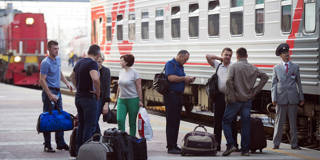
A Trip Through Putin Country
Russia's Baikal-Amur Mainline railway is not nearly as well-known as its much older rival, the Trans-Siberian Railway. But it is the BAM – a halcyon relic from the height of the Soviet Union – that offers a more useful window onto the mood among most Russians today.
VLADIVOSTOK – Russia’s Baikal-Amur Mainline (BAM) railway “can be hardly named as a popular tourist attraction,” says one tourist website of the some 2,000-mile railway traversing Eastern Siberia and the Russian Far East. “Most people even never [sic] heard of it.”